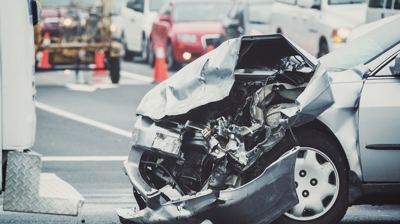

Our Results Make a Difference
Explore How We Have Helped Our Clients
-
Record-Setting $72 Million Verdict Birth Injury
The Buckingham & Vega team obtained a $72 Million verdict in a birth injury case when an OB/ GYN failed to properly monitor the mom during pregnancy.
-
$16 Million Truck Accident
Buckingham & Vega obtained a $16 million settlement in a truck accident case. The truck driver was speeding and inattentive (texting) and crashed into the rear of a pickup truck stopped at a stoplight.
-
$14 Million Dram Shop Liability
Our team obtained a $14 million dram shop verdict on behalf of a client who was injured due to negligence.
-
$13 Million Truck Accident
Our team secured a 13 million settlement in a truck accident case. An eighteen-wheeler made an unsafe turn in front of a car driven by a grandmother and her family. The grandmother was killed and the family suffered severe injuries.
-
13 Million Work Injury
Buckingham & Vega represented an oilfield worker who was killed when their company failed to properly train its employees on how to safely move waste bins. Our client was killed when he became trapped between two bins.
-
$12 Million Birth Injury
The attorneys at Buckingham & Vega obtained a $12 million birth injury settlement.
A Pedestrian’s Rights in Texas
It’s important to know your legal rights and obligations when it comes to sharing the road with vehicles and cyclists. The right-of-way laws for pedestrians are established at the state level. Under Texas law, vehicles are required to yield to people using crosswalks, marked or unmarked, when they’re in the same half of the roadway. They also have the right-of-way in the following situations:
- The light facing the person walking is green
- The light control signal says “walk”
- They are halfway through a crosswalk without a signal
- They are walking along the side of a road that doesn’t have a sidewalk
- They are crossing an alley, driveway, or building entrance
According to §552.005 (b) of the Texas Transportation Code, walkers can cross at an intersection when both adjacent intersections are equipped with control signals. However, they can also cross the street at any point between intersections if at least one of the two adjacent intersections is not controlled by a signal. In Texas this is not considered jaywalking.
What to Do If You’re Hit by a Car
There are drivers who choose to ignore the laws discussed above. Being struck by a car is a traumatizing event. It can seem impossible to decide what to do after the crash, but there are steps you can take to improve your chances of making a full recovery—physically, emotionally, and financially.
Immediately following an accident, do what you can to breathe and control your emotions. Evaluate yourself for injuries and call 911 right away. You may feel physically fine, but adrenaline can significantly reduce the pain level you experience. The sooner you give a statement to police and are treated by medical professionals, the better.
The driver should stay at the scene of the accident. Collect contact information from them, as you’ll need that information to file a claim. If the driver takes off and commits a hit-and-run, aim to take a photo or mental note of their vehicle and license plate. Even a partial plate can help police identify the driver.
Once you’ve given your official statement to the police and you’ve been evaluated and treated for injuries, you can get in touch with a pedestrian accident lawyer in Midland so you can start your insurance claim and move toward receiving the compensation you need to recover.
Don't wait. We're ready to fight.
Pedestrian Accidents and Catastrophic Injuries
While it’s not uncommon to get injured as a passenger or driver in a car accident, it’s less likely than those on foot getting hurt because of the protection offered by the vehicle. Pedestrians don’t have built-in airbags or seatbelts to protect them. Because of this, the injuries they sustain after being hit by a car have the potential to be catastrophic. This means that the injuries affect their ability to be gainfully employed.
Common catastrophic injuries include spinal cord damage, traumatic brain injuries, multiple bone fractures, amputations, and internal organ damage. With any of those injuries, there’s the possibility of surgery. Physical therapy is likely to follow. If someone loses a limb, they’ll need to relearn how to complete everyday tasks and learn how to use a prosthetic device, if they choose to get one.






